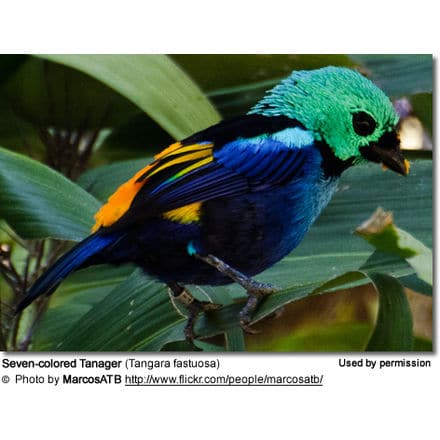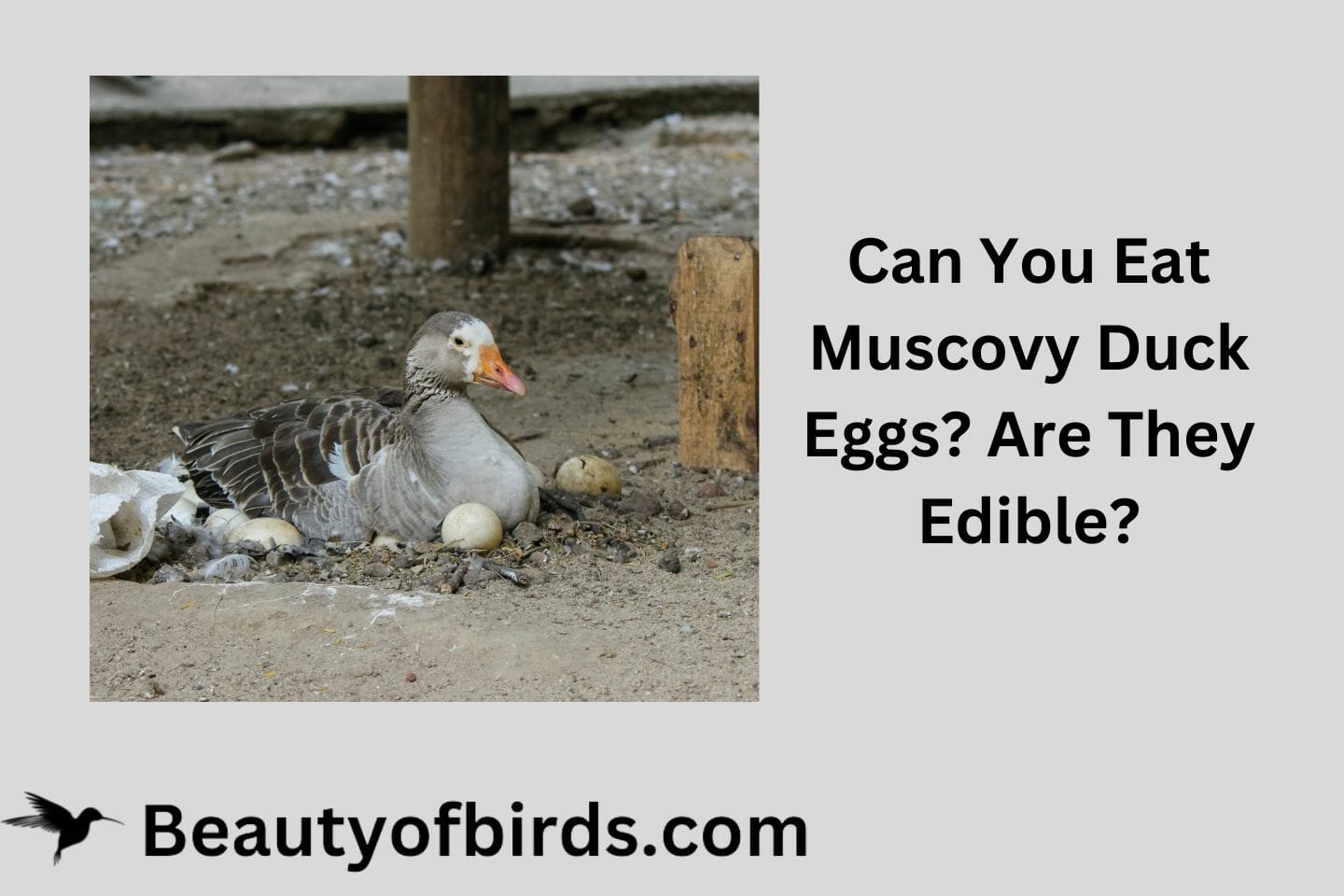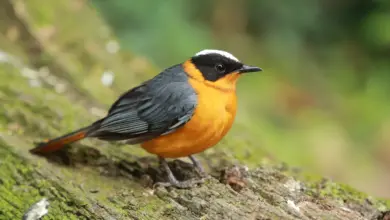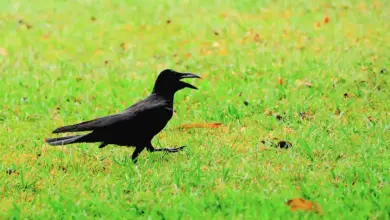Seven-colored Tanagers
The Seven-colored Tanagers (Tangara fastuosa) are rare, brightly-colored songbirds with a very small and declining range in Brazil, South America.
Endangered Species: A rapid population decline is suspected to be caused by massive clearance of their forest habitats and heavy trapping for the cage bird trade (trappers are able to catch up to 30 birds in a single day). These birds are classified as Vulnerable (VU) on the IUCN Red List and are listed on Appendix II of CITES. Population estimates (in the wild) range from as low as 1,152 to a maximum of 10,000.
They are close relatives of the Gilt-edged Tanagers (Tangara cyanoventris), Red-necked Tanagers (Tangara cyanocephala) and Brassy-breasted Tanagers (Tangara desmaresti).

Distribution / Range
Seven-colored Tanagers are found in extreme eastern Brazil, in the states of Paraíba, Pernambuco and Alagoas, where they have been recorded at over 50 localities. Additional localities in Rio Grande do Norte where the species was recently recorded – namely in Capim Macio and Parque das Dunas Costeiras and Baia Formosa – may actually be released cage birds. However, range expansion is a possibility.
They occur in severely fragmented, mature lowland and montane Atlantic and humid forests, as well as severely degraded, bushy second growth and urban locations. Their main requirement is the availability of trees with bromeliads growing on them (needed for nesting).
These tanagers are mostly found in pairs or in groups of up to four individuals high up in the canopy and forest edges.

Description
The medium-sized Seven-colored Tanagers measure 5.1 – 5.3 inches (13 – 13.5 cm ) in length and weigh about 0.7 – 0.9 oz (21.1 – 24.8 grams) – the average being 0.82 oz (23.2 grams).
The head, chin and back (mantle) are a striking turquoise-green. The large bill, the throat, and the surrounding areas are black. The back is black extending over the shoulders. The chest is bright blue turning a darker ultramarine on the abdomen.
The wing coverts (feathers) are pale turquoise-blue with broad orange edging on the tertials (= the flight feathers that are closest to the bird’s body along the wing). There is a dark blue edging to the wing and tail feathers. The lower back and rump are bright orange.
Females can be identified by their duller plumage.
Tanager Information … Tanager Species … Tanager Species Photo Gallery

Breeding / Nesting
In their natural range in Brazil, most breeding occurs in the spring and summer, which is between October and March. These tanagers reach reproductive age when they are about one year old.
Nests are constructed out of twigs and placed into dense mid-story vegetation – usually in large bromeliads that are attached to trees at least 50 feet (15 meters) off the ground.
The average clutch consists of 3 – 4 eggs, which are incubated for about 15 – 17 days to hatching.
Captivity
Seven-colored Tanagers are popular attractions in zoos. They have very specific requirements to be kept successfully, such as spacious, well-planted flights with ample height. Both males and females are aggressive and territorial even towards their own kind unless a pair bond has been established. They are known for killing the chicks of other birds kept in the same flight.
The feeding recommendation for these birds generally is: 50% fruits, 33% softbill pellets, 10% chopped, hard-boiled egg, 5% vegetables and greens, and 2% live food. The produce is best diced into cubes between 0.2 – 0.5 inches (0.5 cm – 1.2 cm).
The London Zoo used artificial nests, about 5 – 6 inches (12 – 15 cm) in diameter and deep. Suitable nesting material includes shredded paper, hair, fresh and dried grasses and bamboo leaves. Provide several nest sites to allow the pair to choose one. Place nests as high up as possible, in an area with dense vegetation. If several tanager species are in the same aviary, it is best to keep a distance of 20 – 23 feet (6 – 7 meters) between the nests to avoid territorial disputes.
Diet / Feeding
Seven-colored Tanagers mostly feed on various seeds, fruits, berries, and occasionally arthropods (insects, spiders, worms, etc.).
They forage in the forest canopy, along the forest edge; in second growth (1 – 2 meters or 3.3 – 6.6 feet high); as well as in urban gardens, parks and orchards.
They often occur in mixed-species feeding clocks.
Calls / Vocalizations
The Seven-colored Tanager’s call is described as a thinik-ik-ik or it-it-it., often delivered in disputes between males.
Alternate (Global) Names
Chinese: ?????? … Czech: Tangara nádherná … Danish: Pragttangar … Dutch: Zevenkleurige Tangare … Finnish: Palettitangara … French: Calliste fastueux, Calliste superbe, Tangara fastueux, Tangara septicolore, Tangara superbe … German: Vielfarbentangare, Vielfarben-Tangare … Italian: Tanagra settecolori, Tangara settecolori … Japanese: nishikifuukinchou, ?????????? … Norwegian: Mangefarget tanagar, Palettanagar … Polish: tangarka wspaniala, tangarka wspania?a … Portuguese: pintor-verdadeiro, Saira-pintor, saíra-pintor … Russian: ??????????? ??????? … Slovak: tangara nádherná … Slovenian: Sedmobarvni strnad … Spanish: Tangara Sietecolores, Tángara Colorida, … Swedish: Prakttangara





